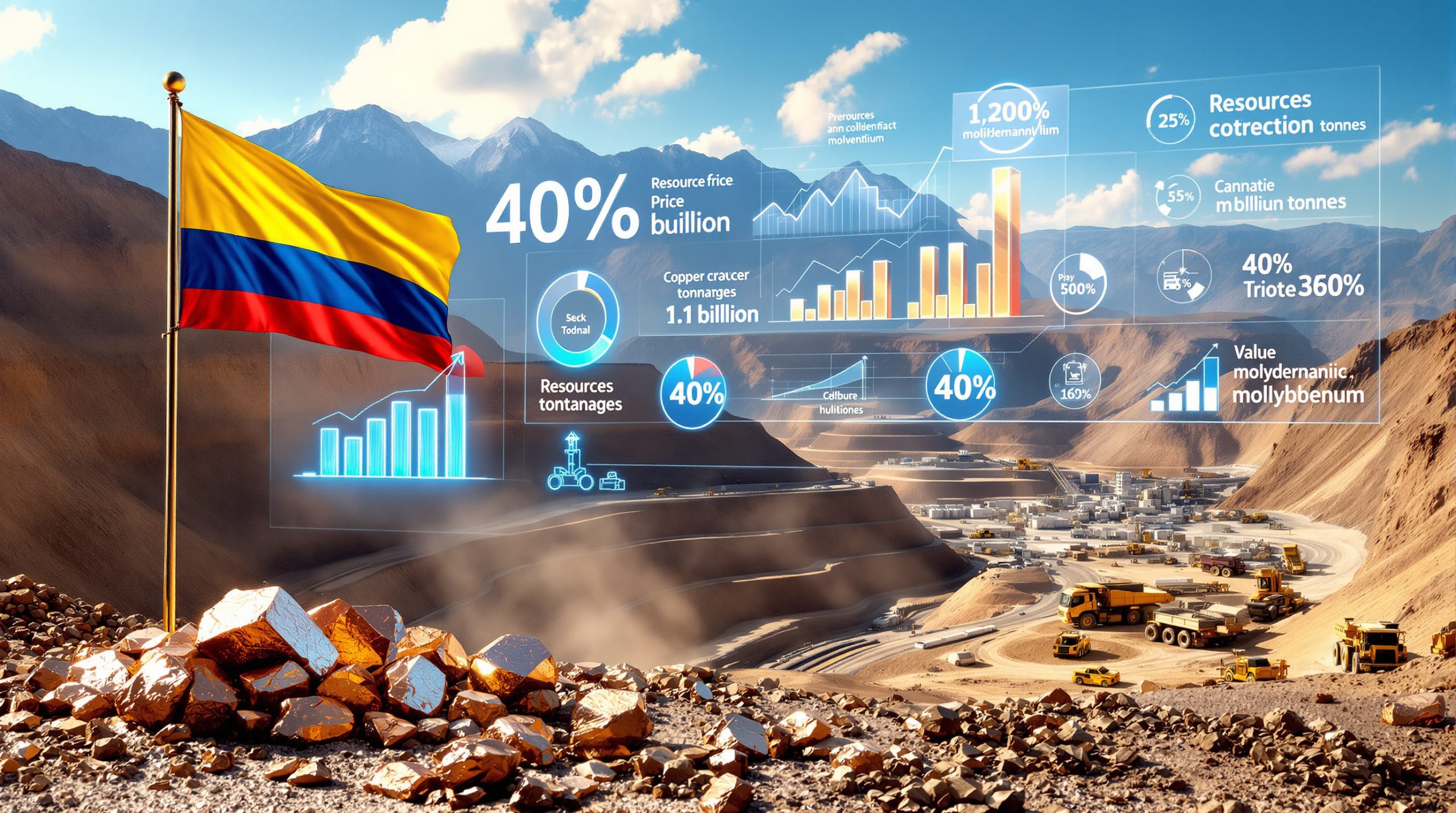The Geopolitical Risk Premium Framework
Energy markets operate through sophisticated risk assessment mechanisms that extend far beyond traditional supply-demand calculations. When diplomatic developments emerge from conflict zones, particularly those involving major energy-producing regions, markets undergo systematic repricing of embedded geopolitical premiums. This process represents one of the most complex dynamics in global commodity trading.
Professional traders incorporate forward-looking risk calculations across multiple contract months, with futures typically carrying 5-15% premiums during active conflicts. Recent market behavior exemplifies this mechanism: following reports of Ukraine's agreement to peace framework discussions with U.S. involvement, crude oil markets experienced immediate algorithmic selling, with Brent crude falling to approximately $62.00 per barrel.
Algorithmic Response Systems During Diplomatic Breakthroughs
Modern energy markets rely heavily on quantitative trading systems that respond instantaneously to geopolitical developments. These algorithms employ sophisticated positioning strategies incorporating momentum indicators, volatility assessments, and risk premium calculations. When peace speculation emerges, several interconnected mechanisms activate simultaneously.
Momentum Trading Activation:
• Technical level breakdown: Pre-established support levels break during peace announcements
• Stop-loss cascades: Automated selling orders trigger across limit-order books
• Secondary wave emergence: Tactical traders exploit technical breaks for additional downside
• Cross-asset correlation: Coordinated movements across multiple energy benchmarks
The November 2025 environment demonstrates these characteristics, with ceasefire speculation tests oil's floor mechanisms operating in real-time market conditions. Professional observers noted that despite fundamental support from refinery operations, systematic algorithmic selling created downward pressure exceeding what supply-demand fundamentals would typically justify. Furthermore, our oil price rally insights demonstrate how quickly market sentiment can shift based on geopolitical developments.
Historic Precedent: Hedge Fund Positioning Shifts
A significant structural development occurred in late November 2025, marking the first time in recorded history that U.S. crude futures moved into net short territory. According to Commodity Futures Trading Commission data, WTI hedge fund positioning showed net short positions for the first time since records began in 2007. This unprecedented shift reflects professional traders betting on sustained lower prices following peace developments.
This positioning change represents more than tactical trading adjustments. It signals fundamental reassessment of geopolitical risk premiums across energy markets, with institutional capital systematically reducing long positions and establishing short exposure based on diplomatic progress expectations. However, tariffs affecting investments continue to create additional layers of complexity in market positioning.
European Gas Market Dynamics and Storage Economics
European natural gas markets provide compelling evidence of how ceasefire speculation affects regional energy pricing. Gas prices fell below €30 per MWh (equivalent to $11 per MMBtu), reaching the lowest levels since May 2024. This price compression resulted from three converging factors: peace talk progress, warmer weather forecasts, and abundant supply availability.
Current European Gas Storage Levels:
| Country | Storage Level | Seasonal Position |
|---|---|---|
| Continental Average | 78% full | Above normal |
| Germany | 70% full | Lagging position |
| France | 88% full | Strong position |
| Italy | 89% full | Strong position |
The storage dynamics reveal important insights about how peace dividends manifest in energy markets. Higher-than-normal inventory levels provide cushions against supply disruption risks, enabling markets to price in lower geopolitical premiums with greater confidence. In addition, our natural gas trend analysis shows consistent patterns in how regional markets respond to diplomatic developments.
What Role Does Temperature Forecasting Play in Market Volatility?
Weather patterns significantly influence how markets interpret peace developments. Following an initial cold spell bringing seasonal snow, temperature forecasts across key European consumption hubs indicated warming trends toward 8-9°C during early December. This meteorological outlook reduced heating demand expectations, amplifying the downward price pressure from geopolitical developments.
The interaction between weather forecasting and diplomatic progress creates compounding effects on energy prices. When both factors align to reduce demand and risk simultaneously, markets often experience volatility spikes followed by sharp corrections.
Global Supply Chain Reconfigurations
Peace negotiations trigger complex supply chain adaptations across global energy networks. Arctic LNG 2 provides a compelling case study of how geopolitical changes influence logistics decisions. The Novatek-led project shifted from Northern Sea Route deliveries to Suez Canal routing for Chinese shipments, demonstrating how seasonal constraints and sanctions considerations interact with peace speculation.
Route Comparison Analysis:
• Northern Sea Route: 20-25 days to Asian markets, seasonal limitations
• Suez Canal Route: 35-40 days to Asian markets, year-round availability
• Cost differential: Additional $3-5 per barrel in transportation and time value
• Risk profile: Different exposure to regional geopolitical developments
This routing shift illustrates broader supply chain security considerations during peace processes. While ceasefire speculation reduces some geopolitical risks, it simultaneously exposes energy flows to different chokepoint vulnerabilities.
Critical Infrastructure Protection Mechanisms
Global energy markets price multiple chokepoint risks simultaneously, with risk premiums adjusting based on regional stability assessments. The three primary maritime chokepoints handle approximately 36.4 million barrels per day of crude flows, representing roughly 36% of seaborne trade.
Primary Chokepoint Flows:
• Strait of Hormuz: 21.0 million barrels/day (8-12% risk premium during tensions)
• Suez Canal/SUMED: 9.2 million barrels/day (3-6% risk premium during conflicts)
• Bab el-Mandeb: 6.2 million barrels/day (2-4% risk premium during instability)
When peace agreements reduce tensions in one region, markets recalibrate risk assessments across all critical infrastructure. This creates cascading effects where ceasefire speculation in Eastern Europe influences pricing for Middle Eastern and Red Sea shipping corridors.
Institutional Capital Allocation Responses
Large institutional investors employ sophisticated rebalancing strategies during major geopolitical transitions. Saudi Aramco's reported consideration of asset divestments worth billions of dollars exemplifies how national oil companies adapt to anticipated lower price environments following peace resolutions.
The strategic logic involves optimising portfolio composition for sustained peace scenarios rather than conflict-premium environments. This includes divesting stakes in export terminals and storage facilities while potentially increasing downstream integration investments. Moreover, organisations like OPEC market influence continue to play crucial roles in how institutional capital responds to geopolitical shifts.
Central Bank Reserve Management
Strategic petroleum reserves play crucial roles in how markets interpret peace developments. Current global storage includes approximately 2.8 billion barrels in OECD commercial inventories, 1.5 billion barrels in strategic government reserves, and 800 million barrels in private sector emergency stocks.
Reserve management strategies during peace processes involve complex timing calculations. Central banks must balance optimal release timing against potential price floor establishment through storage demand. Higher inventory levels generally support more aggressive risk premium unwinding during diplomatic breakthroughs.
Refining Margin Dynamics and Price Floor Mechanisms
Downstream value chains create technical support levels during peace speculation events. While crude prices fell sharply on ceasefire news, refining margins remained elevated, preventing steeper crude price declines. This demonstrates how integrated energy systems establish natural price floors through operational economics.
Refiners maintain economic incentives to purchase crude at lower price points, supporting markets that might otherwise experience larger declines. The inverse relationship between crude price volatility and refining margin stability becomes particularly pronounced during geopolitical uncertainty resolution.
Margin Support Mechanisms:
• Input cost advantages: Lower crude costs improve refinery profitability
• Inventory optimisation: Strategic crude purchasing during price weakness
• Processing flexibility: Ability to adjust crude slates based on price differentials
• Product demand stability: Downstream consumption patterns remain relatively constant
Cross-Regional Benchmark Differentiation
Different crude oil benchmarks exhibit varying sensitivities to regional conflicts and peace developments. This differentiation reflects underlying supply source dependencies and regional market integration levels.
Brent Crude Characteristics:
European benchmark reflecting continental energy security concerns, showing strong sensitivity to Middle Eastern developments due to import dependencies and moderate response to Eastern European conflicts.
WTI Crude Profile:
North American benchmark with reduced sensitivity to Middle Eastern developments due to domestic production growth, higher responsiveness to Western Hemisphere conflicts, and strong correlation with U.S. energy independence trends.
Dubai/Oman Middle Eastern Benchmarks:
Highest volatility during regional conflicts, strongest correlation with shipping route security, and maximum sensitivity to Iran-related developments and sanctions policies.
Regional Premium Evolution
Peace processes create evolving premium structures across different crude benchmarks. These premiums reflect changing assessments of supply security, transportation risks, and regional stability prospects. The November 2025 ceasefire speculation demonstrated how quickly these premiums can adjust when diplomatic progress appears credible.
Macroeconomic Context and Interest Rate Implications
Broader economic conditions significantly influence how energy markets respond to geopolitical developments. Interest rate environments affect commodity investment attractiveness, storage carrying costs, and currency dynamics impacting oil pricing.
High Interest Rate Impact:
• Reduced commodity appeal: Alternative investments offer competitive returns
• Increased carrying costs: Storage becomes more expensive
• Dollar strength effects: Stronger currency pressures commodity prices
• Investment timing shifts: Capital allocation delays in energy infrastructure
Low Interest Rate Effects:
• Enhanced speculative demand: Commodities become more attractive
• Lower storage costs: Inventory strategies become more viable
• Currency weakness support: Weaker dollar supports commodity pricing
• Infrastructure investment acceleration: Lower financing costs enable project development
The November 2025 environment operates within this macroeconomic framework, where ceasefire speculation tests oil's floor against competing monetary policy influences and broader economic growth expectations. Consequently, understanding volatility and hedging strategies becomes essential for market participants navigating these complex dynamics.
Corporate Strategic Responses to Peace Dividends
Energy companies implement various strategic adjustments during peace processes. ConocoPhillips' recent agreement with Syria's Syrian Petroleum Company to develop gas sector infrastructure exemplifies how institutional actors reposition following conflict resolution.
These corporate strategies typically involve:
• Infrastructure rehabilitation: Rebuilding damaged energy facilities
• Market re-entry planning: Establishing operations in previously restricted regions
• Supply chain restoration: Rebuilding commercial relationships
• Risk assessment updates: Revising long-term project evaluation criteria
The timing of such strategic moves provides insights into corporate confidence levels regarding peace agreement durability and long-term stability prospects.
Investment Recovery Patterns and Timeline Analysis
Sustainable peace agreements generate measurable patterns in energy infrastructure investment recovery. Historical data suggests specific timeline progressions for different types of investment renewal.
Pipeline Construction Resume: 6-12 months following stable ceasefires
Exploration Activity Increase: 15-25% growth in post-conflict periods
International Company Planning: New project development after 18-24 months of stability
Cross-border Trade Normalisation:
| Recovery Phase | Timeline | Typical Recovery Level |
|---|---|---|
| Initial Resumption | 0-6 months | 15-30% of pre-conflict levels |
| Intermediate Recovery | 6-12 months | 60-80% restoration |
| Full Normalisation | 12-24 months | 85-100% restoration |
These patterns provide frameworks for evaluating whether current ceasefire speculation represents temporary market noise or fundamental shifts toward sustained stability.
Energy Transition Implications
Stable geopolitical environments often accelerate energy transition investments, creating longer-term structural implications beyond immediate price adjustments. Peace dividends enable capital allocation shifts toward renewable energy projects, efficiency improvements, and cross-border cooperation initiatives.
Renewable Energy Project Funding: Increased investment in stable regions
Traditional Infrastructure Focus: Efficiency rather than security-driven investments
International Cooperation: Viable cross-border energy projects
Market Integration Enhancement: Better price discovery across regions
These transition effects operate on longer timescales than immediate peace speculation impacts but represent significant structural changes in global energy systems.
Market Psychology and Behavioural Finance Considerations
Energy market participants exhibit complex psychological responses to peace negotiations, often creating temporary market inefficiencies. Information processing delays across global trading centres, algorithmic system conflicts with fundamental analysis, and time zone differences create sequential rather than simultaneous price discovery.
Professional traders must navigate these psychological and technical challenges whilst distinguishing between temporary peace speculation and sustainable diplomatic breakthroughs that generate lasting economic benefits. The November 2025 ceasefire speculation provides a real-time laboratory for observing these market psychology dynamics.
Understanding these interconnected factors requires monitoring multiple indicators simultaneously, from hedge fund positioning and storage levels to infrastructure investment flows and currency movements. Successful market participants develop comprehensive frameworks capable of assessing both immediate risk premium adjustments and longer-term structural implications of geopolitical stability changes.
The relationship between diplomatic progress and energy market fundamentals continues evolving as global energy systems become more integrated whilst simultaneously facing increasing complexity from renewable energy transitions, sanctions regimes, and multipolar geopolitical arrangements. This complexity ensures that ceasefire speculation will continue testing oil's floor through sophisticated mechanisms that extend far beyond simple supply and demand calculations. For instance, energy sector analysis provides additional insights into how these complex dynamics affect broader market performance.
Want to Capitalise on Energy Market Volatility?
Discovery Alert's proprietary Discovery IQ model delivers instant notifications on significant ASX mineral discoveries, including energy and commodity plays that could benefit from geopolitical shifts and market volatility. Explore how historic discoveries can generate substantial returns and begin your 30-day free trial today to position yourself ahead of market-moving announcements.




